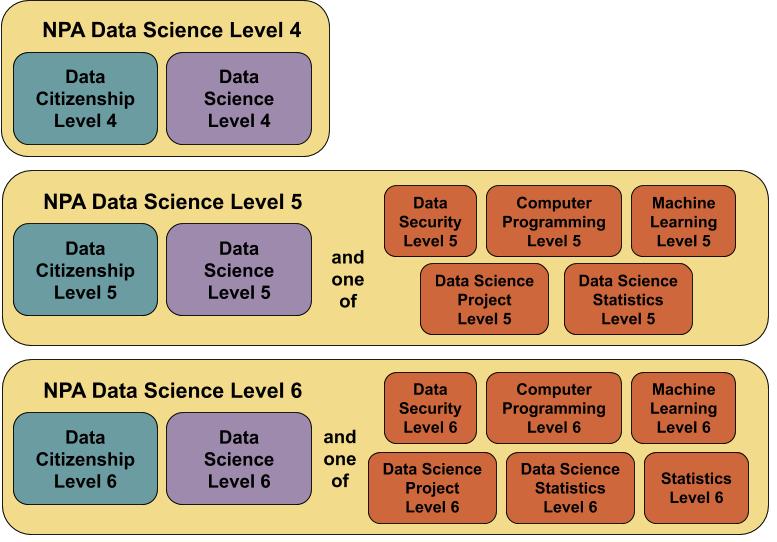Educators new to Data Science often wonder what is actually covered in the National Progression Award (NPA) in Data Science. We will explain the main topics covered in the core units of the qualification.
There are two core units, in Data Science and Data Citizenship. At Level 5 and 6 there is also an optional unit (we will cover the choices for this in a separate article.)

The core units have been written so that they can be delivered either independently or as part of the wider NPA qualification. As a result, there is some overlap in content and learning concepts that come up in both the Data Citizenship and Data Science units. For example, both the Data Citizenship and Data Science units involve learners understanding what data is and how it is represented and used, interpreting visualisations and carrying out simple summary statistics on data.

A progression pathway has been developed for teaching the two core units together in order to reduce repetition in content and to introduce learners to important concepts in a logical order. 13 main topics have been pulled together based on the content and concepts covered in the outcomes and performance criteria, with an additional topic that covers tools and languages.
This is not a fixed pathway. Educators should feel free to introduce topics and concepts in a different order as appropriate to your learning context and situation. Some topics, such as tools and languages, security, privacy, and ethics and bias could be delivered at various points throughout the course. Some topics could be revisited in increasing complexity throughout the course, such as the interpreting data topic, where learners could be shown a variety of visualisations regularly as the course progresses (such as a ‘graph of the week’)
You can find out more about the sequencing of topics in the Educators Guide to the NPA (pages 14-15). The ‘Delivery’ section of the Educators’ Guide (pages 25-41) and the majority of the Learners’ Guide is set out following this progression pathway.



